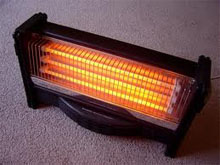
Electric Heaters Resources
- Home
- Efficient Electric Heaters
- Electric Heaters for Different Rooms
- Outdoor Electric Heaters
- Portable Electric Heaters
- 12 Volt Electric Heaters
- 220 Volt Heater
- 3 Phase Electrical Heater
- Above Ground Pool Electric Heater
- Antique Electric Heaters
- Baseboard Electronic Heaters
- Bathroom Electric Heaters
- Best Electric Heaters
- Buy Electric Heaters
- Car Electric Heaters
- Ceiling Electric Heaters
- Ceiling Mounted Electric Heaters
- Ceramic Electric Heaters
- Cheap Electric Heaters
- Commercial Electric Heaters
- Compact Electric Heaters
- Convection Electric Heaters
- DC Electric Heaters
- Economical Electric Heaters
- Efficient Electric Heaters
- Electric Heater Reviews
- Electric Heater With Thermostat
- Fahrenheat Electric Heaters
- Fan Forced Electric Heaters
- Fireplace Electric Heaters
- Flat Panel Electric Heaters
- Floor Electric Heaters
- Forced Air Electric Heaters
- Free Standing Electric Heaters
- General Electric Heaters
- Greenhouse Electric Heaters
- Halogen Electric Heaters
- Hanging Electric Heaters
- Heavy Duty Electric Heaters
- High Efficiency Electric Heaters
- Home Electric Heaters
- In Wall Electric Heaters
- Indoor Electric Heaters
- Industrial Electric Heaters
- Infrared Electric Heaters
- Infrared Electric Heater Reviews
- Large Electric Heaters
- Large Room Electric Heaters
- Low Wattage Electric Heaters
- Marine Electric Heater
- Mini Electric Heaters
- Non Electric Heaters
- Oil Electric Heaters
- Oil Filled Electric Heaters
- Overhead Electric Heaters
- Panel Electric Heaters
- Patio Electric Heaters
- Plug in Electric Heaters
- Process Electric Heaters
- Radiant Electric Heaters
- Recessed Electric Heaters
- Residential Electric Heaters
- RV Electric Heaters
- Safe Electric Heaters
- Small Electric Heaters
- Small Portable Electric Heaters
- Solar Electric Heaters
- Spa Electric Heaters
- Space Electric Heaters
- Swimming Pool Electric Heaters
- Toe kick Electric Heaters
- Tubular Electric Heaters
- Types of Electric Heaters
- Used Electric Heaters
- Vintage Electric Heaters
- Wall Electric Heaters
- Warehouse Electric Heaters
- Electric Heaters FAQ
Space Electric Heaters
Today, some modern space electric heaters come equipped with either ceramic or nichrome heating elements. Most people prefer to use electric-powered heaters to heat rooms. This is because they are quite cost-efficient when it comes to heating up small areas. They are also relatively safer compared to space heaters that use gas and kerosene. There are no open flames or carbon monoxide poisoning or gas piping to be worried about. Of course, space electric heaters are not perfect. There is an ever-present fire risk due to worries of low surface temperatures, switches that cut off power if the device is knocked over and thermal cut-off switches.
Radiative Heaters
There are two common types of space electric heaters. The first is radiative heaters which directly heat people, objects and surfaces in a room. Such heaters normally contain a heating element which will reach high temperatures and therefore, produce heat when switched on. The element is usually contained inside a glass envelope which is similar to a light bulb. A reflector will bounce the produced heat away from the heater itself. The element will then emit infrared radiations away from the heater until it hits a person, object or surface which will absorb the radiations. Some parts of the radiation will be converted into heat, which explains how radiative heaters provide direct warmth to people, objects and surfaces. The other parts will be reflected away, spreading warmth to other parts of the room. Radiative heaters are extremely useful in spaces where unheated air flows through and when spot heating and task-specific heating are desired.
Convection Heaters
Another type of space electric heaters is convection heaters. Convection is a heat-transfer process in which hot air rises while cold air sinks because of the difference in their density. A heating element will heat the air surrounding it, and the hot air will rise out from the heater. Colder air will flow in to the heater to take the hot air's place and will be heated and rise out. This ensures a continuous flow of hot and cold air in and out of the heater until the entire room is heated. Convection heaters are ideal for use in enclosed spaces and are silent. They have a low risk of burning and hence, can be left unattended and switched on for long durations.
Domestic electrical underfloor heating is a lesser known type of space electric heaters that also follows the same principle of convection heaters. When switched on, electricity will flow through a conductive heating material. This material will heat the flooring until it reaches the right temperature which had been pre-set on the flooring thermostat. The heated flooring will, in turn, heat the air nearby it. Then, the heated air will circulate around the room until every object, person and surface is heated. This heating method is the only type that ensures consistent temperature throughout the entire room, from the floor to the ceiling.
Storage Heaters
Finally, a different type of space electric heaters is storage heaters. They take advantage of off-peak electrical pricing to use electricity at cheaper prices. Needless to say, this makes them very efficient in terms of cost. The heat produced from the conversion of electrical energy is stored in clay bricks and is only released when needed.
